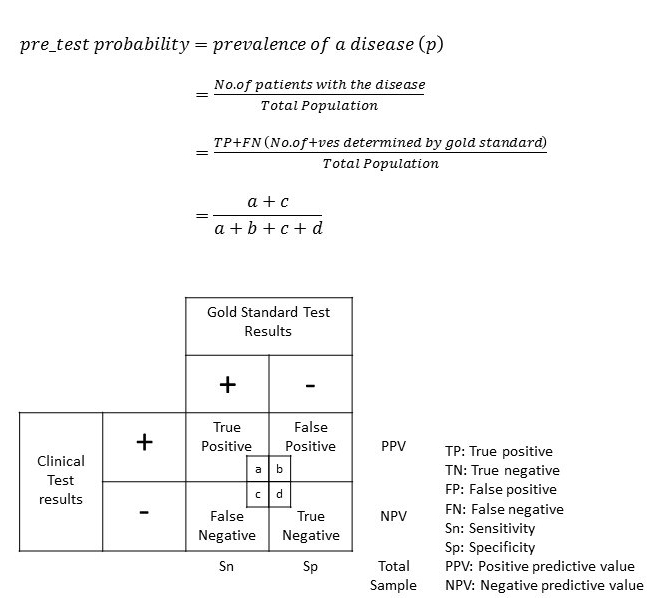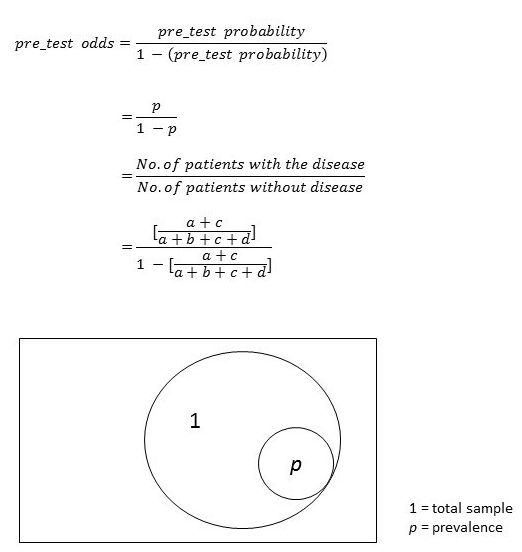Pre-test Probability is the likelihood that a patient has a particular disease before any diagnostic tests are performed.
The pre-test probability and disease prevalence are related concepts and it is important to know the difference between them.

Here’s how they differ:
Pretest Probability
Definition: Pretest probability is the probability of a patient having the suspected disease before application of a diagnostic test. It is based on the patient’s specific clinical presentation, history, risk factors, and other relevant information.
Context-Specific: It reflects the probability for an individual patient and is influenced by their unique symptoms and risk factors. For example, if a patient has classic symptoms of cancer, their pretest probability of having cancer would be higher than that of a patient without these symptoms.
Prevalence
Definition: Prevalence is the proportion of a population that has a particular disease at a given time. It is a measure of how common the disease is within a broader population.
Population-Based: It provides an overall estimate of disease frequency and is not specific to any one patient. For example, if 10% of a general population has diabetes, the prevalence of diabetes in that population is 10%.
Relationship Between Pretest Probability and Prevalence
Influence: Pretest probability for an individual patient can be influenced by the prevalence of the disease in the general population. For example, if a disease is very rare (low prevalence), the pretest probability for an individual might be lower unless the patient has specific risk factors that increase their likelihood of having the disease.
Application: While prevalence gives a general idea of how common a disease is, pretest probability takes into account individual patient characteristics and clinical context to estimate the likelihood of disease more accurately for that patient.
Example to Illustrate the Difference:
Disease Prevalence: In a community of 100,000 people, if 2,000 have a rare disease, the prevalence is 2% (2,000 out of 100,000).
Pretest Probability: If a 50-year-old patient with specific symptoms and a family history of the disease presents, their pretest probability might be higher than the general prevalence of the disease because their individual risk factors make them more likely to have it compared to the average person in the population.
Therefore, pretest probability is patient-specific and context-driven, while prevalence is a broader measure of disease frequency in a population.
From pre-test probability, pre-test odds can be calculated.
Pre-test Odds: It is defined as the odds that a patient has the suspected disease before application of a diagnostic test.

References:
- Šimundić, A.M., 2009. Measures of diagnostic accuracy: basic definitions. EJIFCC, 19(4), p.203.
- McGee, S., 2012. Evidence-based physical diagnosis. Elsevier Health Sciences.
- Fletcher, R.H., Fletcher, S.W. and Fletcher, G.S., 2012. Clinical epidemiology: the essentials. Lippincott Williams & Wilkins.